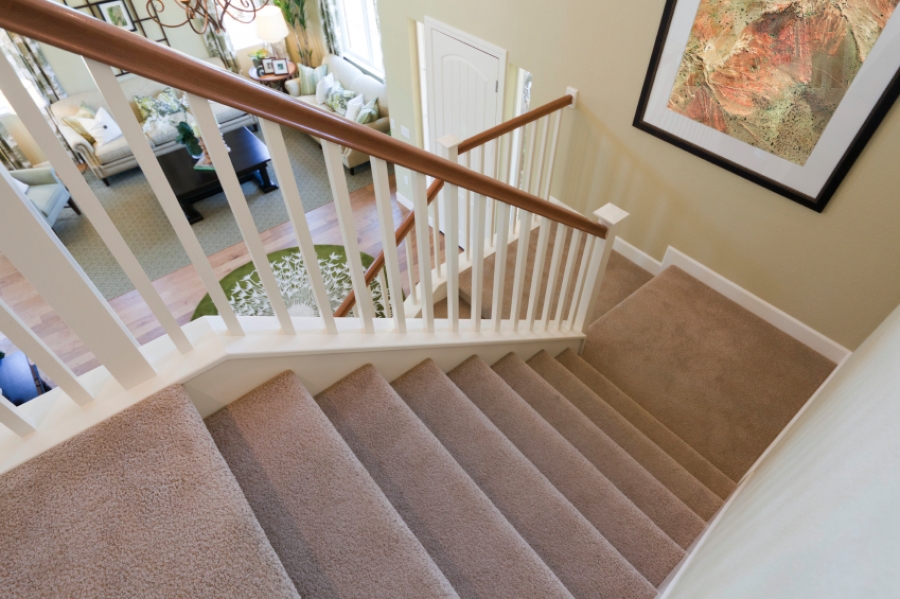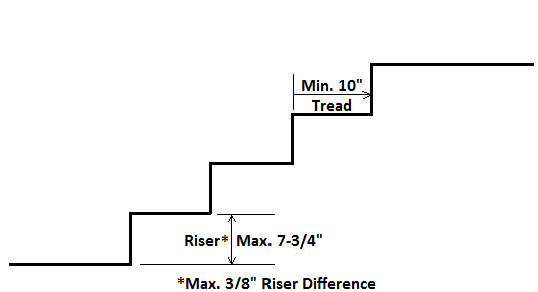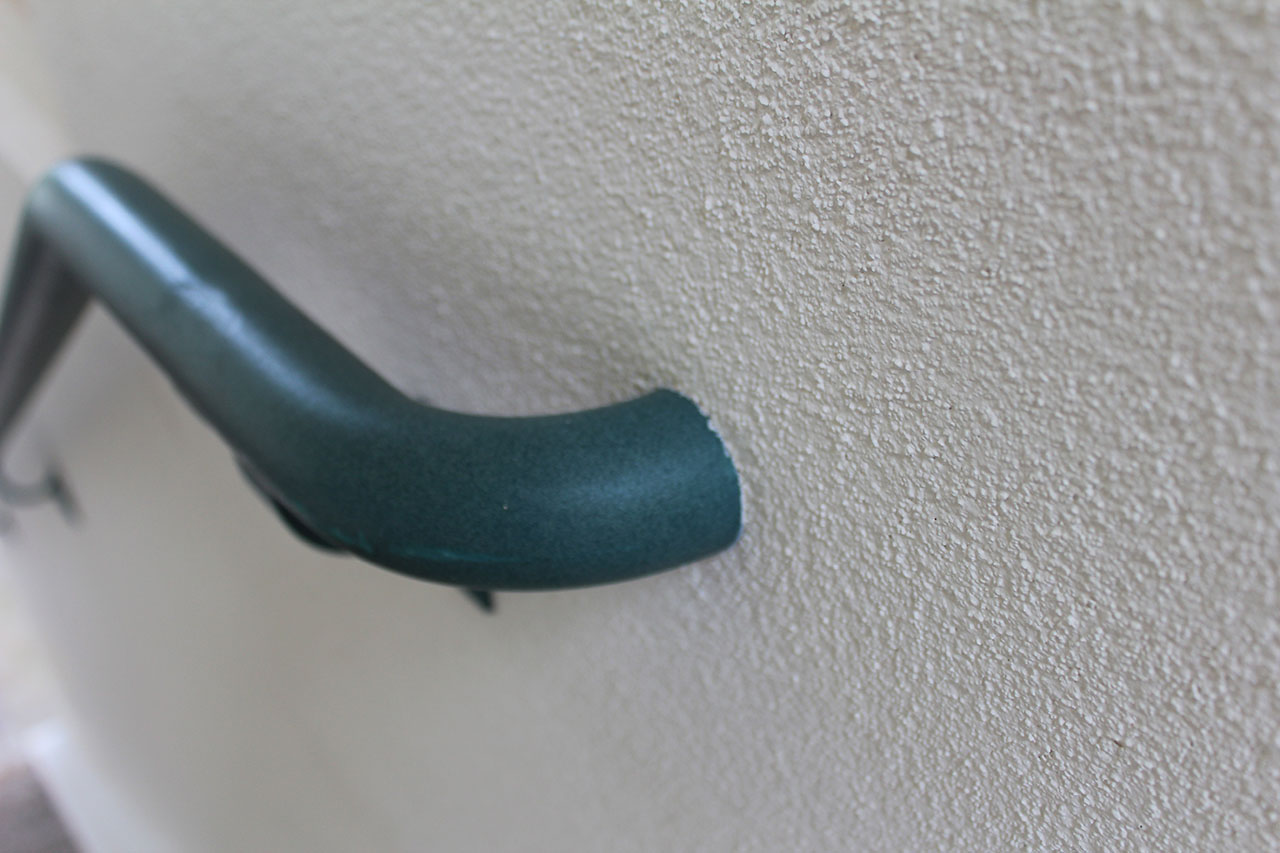Stair Safety
One of the most common worries among parents is that their children will fall on the stairs. In addition to installing gates and other protective devices, addressing any issues with the structure of the stairs themselves – especially the flooring around the stairway – can prevent injury.
A study published in March 2012 in the medical journal Pediatrics found that an estimated 932,000 children under the age of five were taken to hospitals for injuries received while falling down stairs between 1999 and 2008. In the subgroup of babies age one year or less, 25% were being carried by an adult at the time of the fall. As a homeowner, you should be aware of certain things to ensure that the stairs in your home are safe for you and your family.

Differing riser heights are a common cause of falls. The risers are the vertical portion of your stairs, while the treads are the horizontal pieces you step on (see figure). As you walk up or down a set of stairs, each step you make should be consistent. When one step is taller or shorter than the rest because of a different riser height, the rhythm of your steps may be thrown off. This can cause a misstep or fall.

Per the latest edition of the 2012 International Residential Code (IRC), the maximum allowed difference in riser height is 3/8". (This means that the difference in height between the tallest and the shortest riser on your stairs can be no more than 3/8".) In new homes, this criterion is reviewed and checked by multiple people during the construction and inspection process.

So why would riser heights vary in existing homes? The most common answer is that they vary due to changes made to flooring. When you add a thicker or thinner flooring material, either on your stairs or at the top or bottom of your stairs, you are actually altering the riser heights.
For example, let's assume that you have decided to replace your vinyl sheet flooring in the foyer with a nice 3/4" thick hardwood. Let's also assume that your stairs to the second floor are located in the foyer. So by replacing the vinyl with hardwood, you have just reduced the riser height on your first step by 3/4". If your stairs were originally installed per code, they will no longer be compliant after you install the hardwood. The same problem would be created if you added hardwood at the top of the stairs; in that case, the riser would be too high.
Is an existing home required to meet the current codes? Not necessarily. However, the IRC does give us a good gauge of whether our homes are safe per today's standards for new builds. ( I should mention that the riser height criterion above has been in existence for as long as I can remember.)
Tips to avoid falls down your stairs
If you have nosings (a nosing is the front edge of the tread that overhangs the riser), and decide to add hardwood at the top of stairs, make sure that the new nosing has the same overhang distance as the others. A shorter or longer overhang can create trip hazards.
If you add new flooring on top of your stair treads, be sure that the edge trim doesn't create a trip hazard. For example, if you install a laminate flooring, don't use a thick molding at the nosing edge that can catch your toes. (I have seen this done, and it makes for a difficult step.)
The minimum safe tread depth is 10" (see diagram), so don't add material to the riser surface that would diminish your tread depth to below 10".
You should have a continuous handrail on your stairs that can be grasped easily. "Continuous" means from the first step to the last with no breaks. You can add a rail to the wall rather inexpensively ($30–$40 for material). Make sure that the outside diameter of the rail material is between 1-1/4" and 2" – any wider and it's not easily graspable. Also, be sure that the handrail returns completely to the wall, which helps to prevent articles of clothing from catching on the end of the rail. The height should be between 34" and 38" (measured vertically from the nosing edge).

Michael Luckado
Michael Luckado has built, remodeled, and repaired thousands of homes during his 16 year career as a home builder/general contractor. He created ArmchairBuilder.com to help homeowners and homeowners-to-be to take on the role of general contractor for their home building and remodeling projects, saving money yet getting exactly what they want from the process.
Website: www.armchairbuilder.com/

